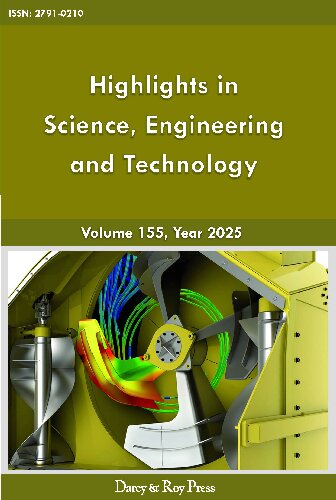Drone Situation Awareness and Path Planning Based on Deep Learning
DOI:
https://doi.org/10.54097/8ybnys51Keywords:
Situational awareness, path planning, Deep learning, drone technology.Abstract
With the rapid development of artificial intelligence and drone technology, drones are increasingly being used in military reconnaissance, disaster monitoring and rescue, agriculture, logistics and distribution, and other fields. Situational awareness and path planning, as key capabilities of drones, are critical to their ability to perform efficient and autonomous operations. This paper reviews the current application of deep learning in drone situational awareness and path planning, analyses its advantages and challenges, and discusses future development directions. Deep learning technology, through its powerful data processing and feature extraction capabilities, significantly improves the accuracy of situational awareness and the efficiency of path planning for drones in complex environments. However, current deep learning applications in drones still face challenges such as high data requirements, insufficient model generalization ability, limited computing resources, and security and robustness issues. Future research directions should focus on developing more efficient deep learning models, improving the interpretability and generalization ability of models, and optimizing drone hardware systems to meet real-time requirements. The introduction of interdisciplinary research will further promote the development of drone technology, enabling it to achieve efficient and safe applications in more fields.
Downloads
References
[1] H. Wu, C. Zhang, Overview of Autonomous UAV Path Planning Technology. Technology of Io T& AI. 54, 1-7 (2022)
[2] P. Xu, Research on Multi-Scene Perception and Path Planning Technology for UAVs Based on Deep Learning, Ph.D. thesis, Beijing University of Posts and Telecommunications, Faculty of Computer Science (2024)
[3] G. Wang, X. Zhao, Y. Jie et al., Collaborative Decision-Making Method for UAV Air Combat Based on Situational Awareness. Control and Decision. (2025) 10.13195/j.kzyjc.2024.0984
[4] R. Geraldes, A.Gonçalves, T. Lai et al., UAV-Based Situational Awareness System Using Deep Learning. in IEEE Access, vol. 7, pp. 122583-122594 (2019) 10.1109/ACCESS.2019.2938249
[5] F. Wang, H. Yang and Q. Meng, A three-dimensional coverage path planning method for multi-UAV collaboration. 2023 30th International Conference on Geoinformatics, London, United Kingdom, pp. 1-6 (2023). 1109/Geoinformatics60313.2023.10247698.
[6] P. Suyal, K. K. Gola, R. Kanauzia, S. Dutt, Mridula and L. Mohan, Deep Learning for Unmanned Aerial Vehicles: Advancements, Applications, Challenges, and Future Directions. UPCON, Gautam Buddha Nagar, India, pp. 499-503 (2023)
[7] Y. Cai, E. Zhang, Y. Qi and L. Lu, A Review of Research on the Application of Deep Reinforcement Learning in Unmanned Aerial Vehicle Resource Allocation and Trajectory Planning. MLBDBI, Shanghai, China, pp. 238-241 (2022) 1109/MLBDBI58171.2022.00053.
[8] Y. Shen, Research on Target Feature Extraction Methods in Vision-Based UAV Situational Awareness, Master thesis, National University of Defense Technology, Control Science and Engineering (2014)
[9] X. Li, Research on the Application of Deep Learning in Situation Awareness, Master thesis, Xidian University, School of Computer Science and Technology (2021)
[10] X. Li, Y. Cai, UAV path planning based on improved ant colony algorithm. Flight Dynamics. 35, 52-56 (2017)
Downloads
Published
Issue
Section
License
Copyright (c) 2025 Highlights in Science, Engineering and Technology

This work is licensed under a Creative Commons Attribution-NonCommercial 4.0 International License.


















